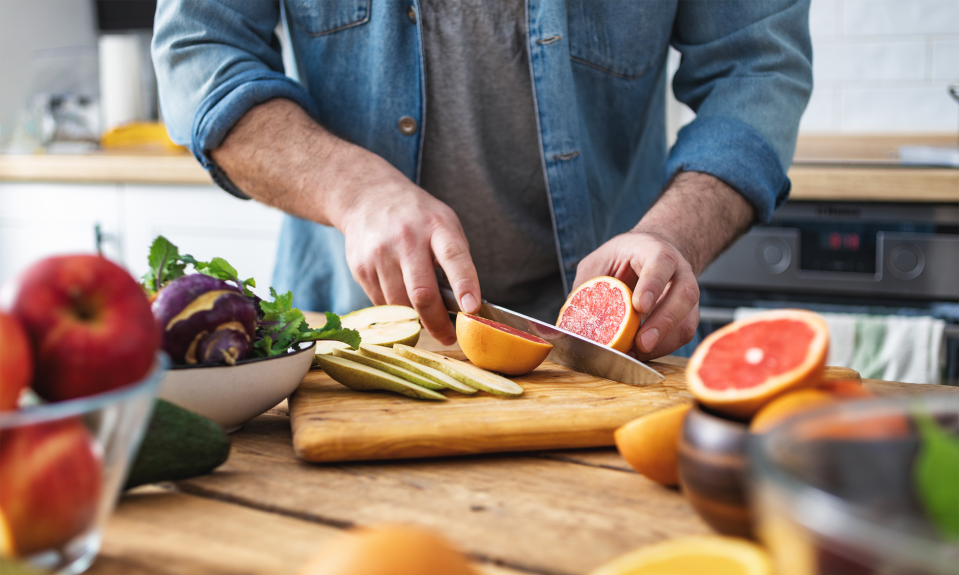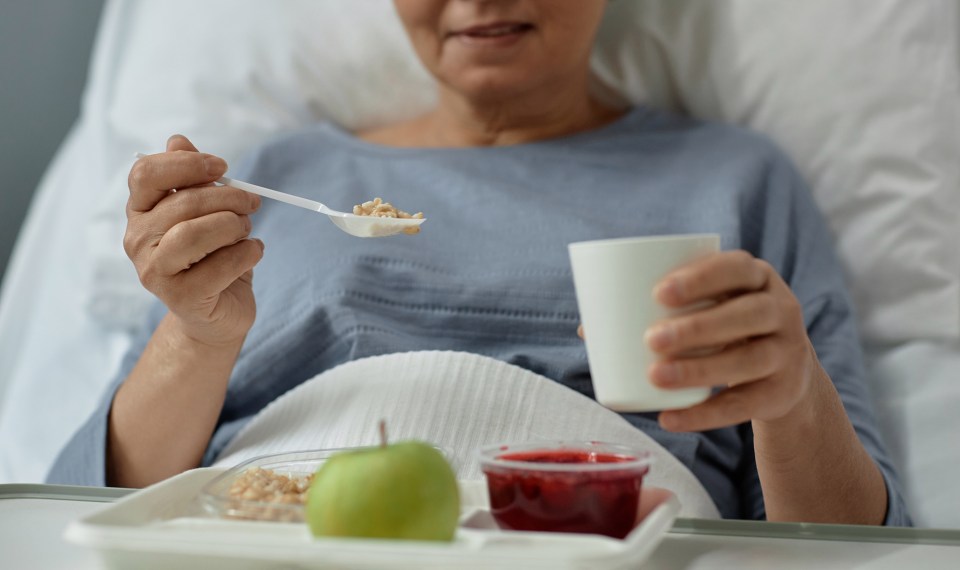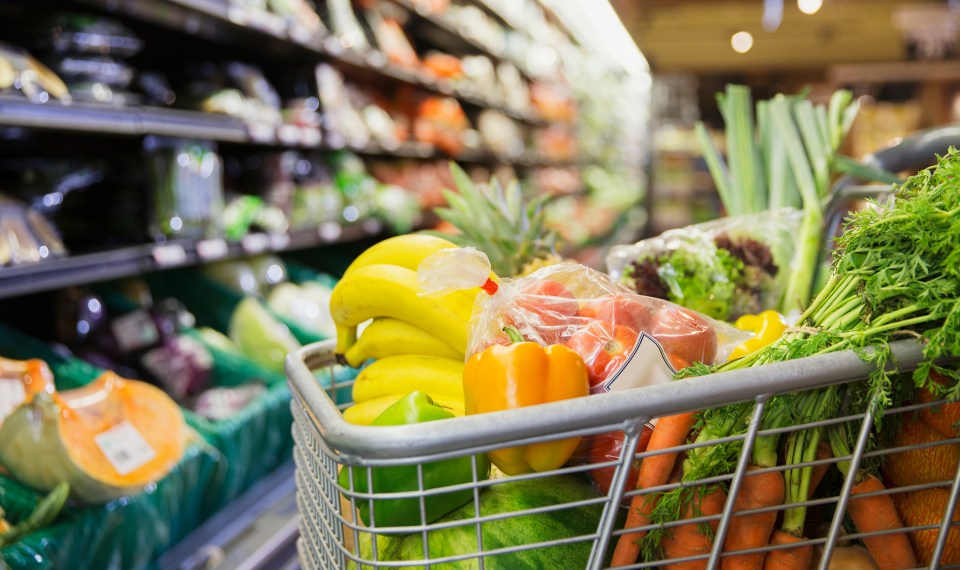Eating a healthy diet is important for variety of reasons, but did you know the right foods and nutrients can play a role in aging and, in some cases, even slow the process?
Mirelis Venezuela, a certified dietitian at Encompass Health Rehabilitation Institute of Tuscon, said aging is the result of the accumulation of oxygen radicals over time. One way to delay or slow aging: include plenty of antioxidants in your diet.
What is an Antioxidant?
Antioxidants are substances that protect cells from the damage caused by oxygen radicals. They can be found in a variety of foods. While the FDA has recommended daily allowances, or RDAs, for antioxidants, Venezuela said you might need more as you get older or if you are under stress. Some examples of antioxidants and where to get them include:
- Vitamin A: The RDA is 700 micrograms for women and 900 micrograms for men. Foods that provide vitamin A include sweet potatoes, carrots and winter squash.
- Vitamin C: The RDA is 90 milligrams for adults. Foods that provide vitamin C include sweet peppers, citrus and broccoli.
- Vitamin E: The RDA is 15 milligrams for adults. Foods that provide vitamin E include oils, seeds and wheat germ.
- Copper: The RDA is 10 milligrams for adults. Foods that provide copper include oysters, spirulina and cashew nuts.
- Selenium: The RDA is 55 micrograms for adults. Foods that provide selenium include Brazilian nuts, Shiitake mushrooms and chia seeds.
- Zinc: The RDA is 8 milligrams for women and 11 milligrams for men. Foods that provide zinc include pumpkin seeds, legumes and liver.
Recent studies also suggest that the flavonoids found in red wine are also beneficial in slowing the impacts of aging, as “they are potent antioxidant agents,” Venezuela said.
Don’t Forget about B-Complex Vitamins
Venezuela describes B vitamins as “the building blocks for a healthy body.” She said they are found in all sorts of foods, but often, people are still not getting enough of them, especially older adults. While she always agrees that fresh is best when it comes to getting your intake of these powerful nutrients, she said a B-complex vitamin supplement, which packs the most important B vitamins into one pill, could be needed.
Some of those important B vitamins include:
- Thiamine: The RDA is 1.2 milligrams for men and 1.1 milligrams for women. Foods high in thiamine include pork, fish and green peas.
- Riboflavin: The RDA is 1.3 milligrams for men and 1.1 milligrams for women. Foods rich in riboflavin include milk, yogurt, cheese and eggs.
- Niacin: The RDA for niacin is 16 milligrams for men and 14 milligrams for women. Foods high in niacin include: Red meat, poultry, brown rice and nuts.
- Pantothenic acid: The RDA for both men and women is 5 milligrams. Foods high in pantothenic acid include meats, nuts, avocados and mushrooms.
- Pyridoxine: The RDA for pyridoxine is 1.3 milligrams for adults. Foods in pyridoxine include tuna, salmon, chickpeas and poultry.
- Biotin: The RDA for biotin is 30 micrograms for both men and women. Foods high in biotin include organ meats, eggs, seeds and nuts.
- Folic acid: The RDA for folic acid is 400 micrograms for men and women. Foods rich in folic acid include dark green leafy vegetables, beans, peanuts and fresh fruit.
- Cyanocobalamin: The RDA for cyanocobalamin is 2.4 micrograms for men and women. Foods rich in cyanocobalamin include liver, eggs, poultry, fish and dairy.
Fresh Foods are Always Best and Don’t Forget to Hydrate
While there are plenty of supplements out there that can help you reach the recommended daily intake of vitamins, Venezuela said it’s best to try to get them through fresh food. She said supplements are not supposed to replace nutrient rich foods.
The Dietary Guidelines for Americans agrees, stating that your nutritional needs should come primarily from food and beverages.
Venezuela said to choose fresh first, and then frozen if fresh is not an option. Canned goods are not recommended. “Frozen is better than canned if they don’t have fresh,” she added. “Cans lose a lot of their nutrients through the manufacturing process.”
Equally important to getting the right vitamins and minerals is hydration. Venezuela said drinking water is essential to all your body functions. To calculate how many 8-ounce glasses you need to drink a day, divide your weight in pounds by 16. And remember, she added, water can’t be replaced with other fluids.
4 Healthy Aging Powerhouses to Try
While these are nothing new, they have gained popularity in recent years and have an array of health benefits related to aging and more.
- Green tea: Drinking a cup or two of green tea a day has a variety of benefits. Naturally caffeinated, it can give you a boost of energy. It also serves as a source of calcium, iron, potassium and polyphenol, an antioxidant. “The Japanese have used this for centuries,” Venezuela said. “For me, it’s like coffee in the morning. This is good for not just people who are aging, but everyone.”
- Matcha: Matcha is the best form of green tea and is packed with antioxidants. Unlike traditional green tea, which is made from steeped tea leaves, matcha is made with ground tea leaves that is formed into a powder that can be mixed into drinks and sometimes foods.
- Chlorella: Chlorella is a green, freshwater algae, known for its health benefits. Venezuela said it’s good for the skin, and has also been known to lower cholesterol and high blood pressure. It can be taken in capsule or powder form.
- Maqui Berry: a South American berry that is considered the world’s most antioxidant rich fruit. It has more than 10 times the antioxidant power of a blackberry. Maqui Berry helps to reduce inflammation, suppress blood glucose and regulate cholesterol.
The content of this site is for informational purposes only and should not be taken as professional medical advice. Always seek the advice of your physician or other qualified healthcare provider with any questions you may have regarding any medical conditions or treatments.



